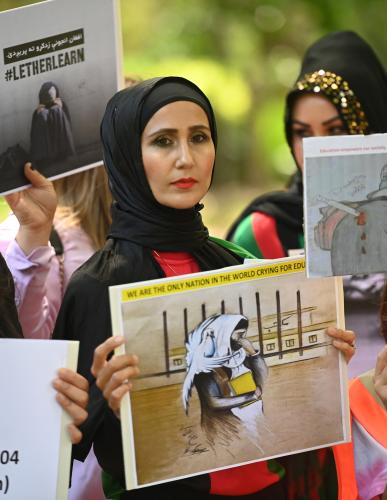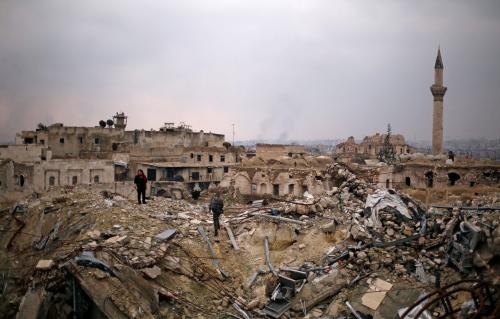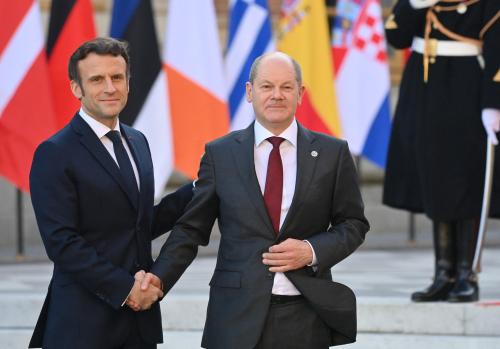Read the Full Online Chat
Listen to Peter W. Singer Discuss Children at War
P. W. Singer: Many thanks for having me today. I thought it might make sense to start us out with a brief summary of the issue we face.
When we think of warfare, children rarely come to mind. But while warfare has long been the domain of adults, juveniles have been present in armies in a number of instances in the past. For example, young pages armed the knights of the Middle Ages and drummer boys marched before Napoleonic armies. Child soldiers even fought in our own civil war, most notably when a unit of 247 Virginia Military Institute cadets fought with the Confederate Army in the battle of New Market (1864). More recently, U.S. forces fought against small numbers of underage Hitler Jugend (Hitler Youth) in the closing weeks of World War II.
However, these were the exceptions to what the rule used to be, that children had no place in war. Throughout the last four thousand years of war as we know it, children were never an integral, essential part of any military forces in history. But the rules of war have changed. The participation of children is now not a rarity, but instead a growing feature of war.
The practice of child soldiers is far more widespread, and more important, than most realize. There are as many as 300,000 children under the age of 18 presently serving as combatants around the globe. Their average age is just over 12 years old. The youngest ever was an armed 5 year old in Uganda. The youngest ever terrorist bomber a 7 year old in Colombia. Roughly 30% of the armed forces that employ child soldiers also include girl soldiers. Underage girls have been present in armed groups in 55 countries.
Children now serve in 40% of the world’s armed forces, rebel groups, and terrorist organizations and fight in almost 75% of the world’s conflicts; indeed, in the last five years, children have served as soldiers on every continent but Antarctica. An additional half million children serve in armed forces not presently at war. The children are often abducted to fight and participate in all the full horrors of war; indeed they are sometimes forced to carry out atrocities that adults shy away from.
The result is that war in the 21st century is not only more prevalent, but more tragic. With children’s involvement, warlords, terrorists, and rebel leaders alike are finding that conflicts are easier to start. In turn wars are harder to end, such that the wars drag on, consuming societies and childhood itself for literally hundreds of thousands of children. A particularly troubling aspect then is not only what happens during the fighting, but the legacy it leaves for children after the fighting is done. That is, recovery from the traumas of war is hard enough; it’s all the more difficult when the soldier in question is a child.
Washington, D.C.: How many child soldiers are being used currently in Iraq and Afghanistan?
P. W. Singer: The overall numbers of Iraqi children involved in the fighting are not yet known. But the indicators are that they do play a significant role in the insurgency. For example, British forces have detained more than 60 juveniles during their operations in Iraq, while U.S. forces captured 107 Iraqi juveniles determined to be “high risk” security threats, holding most at the infamous Abu Ghraib prison.
Its important to note that with the global deployment of U.S. force after 9-11, from Afghanistan to the Philippines, child soldiers are present in every conflict zone U.S. forces now operate in. Indeed, the very first U.S. soldier killed in the war on terrorism was a Green Beret killed by a 14 year old sniper in Afghanistan. At least six young boys between the ages of 13 and 16 have been captured by U.S. forces in Afghanistan in the initial fighting and were taken to the detainee facility at Guantanamo Bay, Cuba. They were housed in a special wing entitled “Camp Iguana.” As the Pentagon took more than a year to figure out whether to prosecute or rehabilitate them, the kids spent their days in a house on the beach converted into a makeshift prison, watching DVDs (their favorites were Castaway and Call of the Wild) and learning English and math.
Under Saddam Hussein, Iraq built up an entire apparatus in the 1990s designed to pull children into the military realm and bolster populace control. This included the Ashbal Saddam (“Saddam’s Lion Cubs”), a paramilitary force of boys between the ages of 10-15 that acted as a feeder into the noted Saddam Fedayeen units that proved more aggressive than the Iraqi army during the invasion. During the invasion, American forces engaged with Iraqi child soldiers in fighting in at least three cities (Nasariya, Mosul, and Karbala). This is in addition to the many instances of children being used as human shields by regime loyalists during the fighting.
The implications of this training and involvement in military activities by large numbers of Iraqi youth was soon felt in the guerilla war that followed. Beaten on the battlefield, rebel leaders sought to mobilize this cohort of trained and indoctrinated young fighters. A typical incident in the contentious city of Mosul just after the invasion provided a worrisome indicator of the threat to come. Here, in the same week that President Bush’s made his infamous aircraft carrier landing proclamation, an Iraqi 12 year old boy fired on U.S. Marines with an AK-47 rifle. Over the next weeks and months, incidents between U.S. forces and armed Iraqi children began to grow, to the extent that U.S. military intelligence briefings began to highlight the role of Iraqi children as both attackers and spotters for ambushes. Incidents with child soldiers ranged from child snipers to a 15 year old that tossed a grenade in an American truck, blowing off the leg of U.S. army trooper.
In the summer of 2004, radical cleric Muqtada al Sadr directed a revolt that consumed the primarily Shia south of Iraq, with the fighting in the holy city of Najaf being particularly fierce. Observers noted multiple child soldiers, some as young as 12 years old, serving in Sadr’s “Mahdi” Army that fought pitched battles with U.S. and British forces. Indeed, Sheikh Ahmad al-Shebani, al Sadr’s spokesman, publicly defended the use of children, stating, “This shows that the Mahdi are a popular resistance movement against the occupiers. The old men and the young men are on the same field of battle.” A 12 year old fighter in the group commented, “Last night I fired a rocket-propelled grenade against a tank. The Americans are weak. They fight for money and status and squeal like pigs when they die. But we will kill the unbelievers because faith is the most powerful weapon.” Coalition forces also have increasingly faced child soldiers in the Sunni Triangle as well. Marines fighting in the battle to retake Falluja in November 2004 reported numerous instances of being fired upon by “children with assault rifles.”
So one of the many, many difficulties of Iraq is the presence of children.



Commentary
Young Soldiers Used in Conflicts Around the World
June 12, 2006